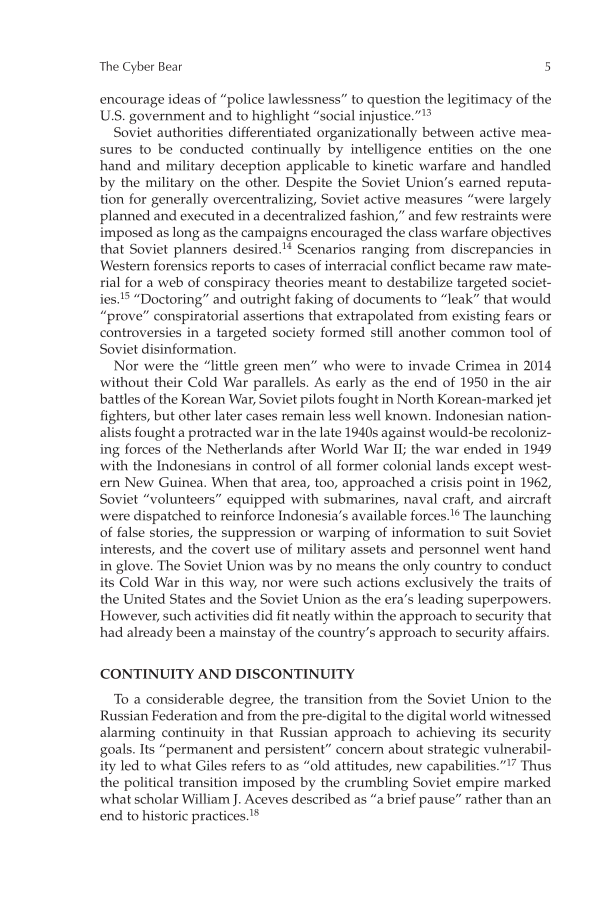The Cyber Bear 5 encourage ideas of “police lawlessness” to question the legitimacy of the U.S. government and to highlight “social injustice.”13 Soviet authorities differentiated organizationally between active mea- sures to be conducted continually by intelligence entities on the one hand and military deception applicable to kinetic warfare and handled by the military on the other. Despite the Soviet Union’s earned reputa- tion for generally overcentralizing, Soviet active measures “were largely planned and executed in a decentralized fashion,” and few restraints were imposed as long as the campaigns encouraged the class warfare objectives that Soviet planners desired.14 Scenarios ranging from discrepancies in Western forensics reports to cases of interracial conflict became raw mate- rial for a web of conspiracy theories meant to destabilize targeted societ- ies.15 “Doctoring” and outright faking of documents to “leak” that would “prove” conspiratorial assertions that extrapolated from existing fears or controversies in a targeted society formed still another common tool of Soviet disinformation. Nor were the “little green men” who were to invade Crimea in 2014 without their Cold War parallels. As early as the end of 1950 in the air battles of the Korean War, Soviet pilots fought in North Korean-marked jet fighters, but other later cases remain less well known. Indonesian nation- alists fought a protracted war in the late 1940s against would-be recoloniz- ing forces of the Netherlands after World War II the war ended in 1949 with the Indonesians in control of all former colonial lands except west- ern New Guinea. When that area, too, approached a crisis point in 1962, Soviet “volunteers” equipped with submarines, naval craft, and aircraft were dispatched to reinforce Indonesia’s available forces.16 The launching of false stories, the suppression or warping of information to suit Soviet interests, and the covert use of military assets and personnel went hand in glove. The Soviet Union was by no means the only country to conduct its Cold War in this way, nor were such actions exclusively the traits of the United States and the Soviet Union as the era’s leading superpowers. However, such activities did fit neatly within the approach to security that had already been a mainstay of the country’s approach to security affairs. CONTINUITY AND DISCONTINUITY To a considerable degree, the transition from the Soviet Union to the Russian Federation and from the pre-digital to the digital world witnessed alarming continuity in that Russian approach to achieving its security goals. Its “permanent and persistent” concern about strategic vulnerabil- ity led to what Giles refers to as “old attitudes, new capabilities.”17 Thus the political transition imposed by the crumbling Soviet empire marked what scholar William J. Aceves described as “a brief pause” rather than an end to historic practices.18
Document Details My Account Print multiple pages
Print
You have printed 0 times in the last 24 hours.
Your print count will reset on at .
You may print 0 more time(s) before then.
You may print a maximum of 0 pages at a time.




























































































































































































































































































